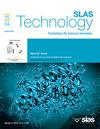Cognitive evaluation model and high-resolution medical images in sports injury rehabilitation under bone density changes
IF 3.7
4区 医学
Q3 BIOCHEMICAL RESEARCH METHODS
引用次数: 0
Abstract
In the study of bone density changes and sports injury rehabilitation, traditional image processing technology lacks accuracy in analysis, rehabilitation assessment methods lack quantitative and systematic analysis, and interdisciplinary comprehensive evaluation is lacking. This paper constructs an innovative cognitive assessment model that combines bone density changes, sports injury rehabilitation, and high-resolution medical image analysis. It uses high-resolution CT (Computed Tomography) images and X-ray images to extract bone density data. It uses image processing technology to remove noise, enhance, and standardize, providing accurate bone density values for subsequent input. GCN (Graph Convolutional Network) can be used to automatically identify and classify images of sports injury sites, extract features of the injured area, record and analyze the patient's physical activities during the rehabilitation stage, and evaluate the recovery process of sports injuries in real time. Combining bone density data with sports injury imaging features, XGBoost (Extreme Gradient Boosting) is used to build a cognitive evaluation model, which conducts a comprehensive analysis of multi-dimensional data and provides personalized rehabilitation evaluation. It can integrate technologies from fields such as medicine, engineering, and computer science to establish an interdisciplinary comprehensive evaluation system, achieve multi-angle and multi-dimensional analysis, and ensure the comprehensiveness and accuracy of the model. The experimental results show that the MAE (Mean Absolute Error) of the GCN in this paper is 0.131 in 10 different injury sites, and the average MSE (Mean Squared Error) is about 0.032, which has higher image analysis accuracy. The average accuracy and R² of XGBoost in six different samples are about 0.87 and 0.91, respectively, and the prediction effect of the cognitive evaluation model is apparent.
骨密度变化下运动损伤康复的认知评价模型和高分辨率医学图像。
在骨密度变化与运动损伤康复的研究中,传统的图像处理技术在分析上缺乏准确性,康复评估方法缺乏定量和系统的分析,缺乏跨学科的综合评价。本文构建了一种结合骨密度变化、运动损伤康复和高分辨率医学图像分析的创新性认知评估模型。它使用高分辨率CT(计算机断层扫描)图像和x射线图像提取骨密度数据。它采用图像处理技术去噪、增强、标准化,为后续输入提供准确的骨密度值。GCN (Graph Convolutional Network)可以对运动损伤部位的图像进行自动识别和分类,提取损伤区域的特征,记录和分析患者在康复阶段的身体活动,实时评估运动损伤的恢复过程。结合骨密度数据和运动损伤影像特征,利用XGBoost (Extreme Gradient Boosting)构建认知评价模型,对多维数据进行综合分析,提供个性化康复评估。它可以整合医学、工程、计算机科学等领域的技术,建立跨学科的综合评价体系,实现多角度、多维度的分析,保证模型的全面性和准确性。实验结果表明,本文GCN在10个不同损伤部位的MAE (Mean Absolute Error)为0.131,平均MSE (Mean Squared Error)约为0.032,具有较高的图像分析精度。XGBoost在6个不同样本上的平均准确率和R²分别约为0.87和0.91,认知评价模型的预测效果明显。
本文章由计算机程序翻译,如有差异,请以英文原文为准。
求助全文
约1分钟内获得全文
求助全文
来源期刊

SLAS Technology
Computer Science-Computer Science Applications
CiteScore
6.30
自引率
7.40%
发文量
47
审稿时长
106 days
期刊介绍:
SLAS Technology emphasizes scientific and technical advances that enable and improve life sciences research and development; drug-delivery; diagnostics; biomedical and molecular imaging; and personalized and precision medicine. This includes high-throughput and other laboratory automation technologies; micro/nanotechnologies; analytical, separation and quantitative techniques; synthetic chemistry and biology; informatics (data analysis, statistics, bio, genomic and chemoinformatics); and more.
 求助内容:
求助内容: 应助结果提醒方式:
应助结果提醒方式:


